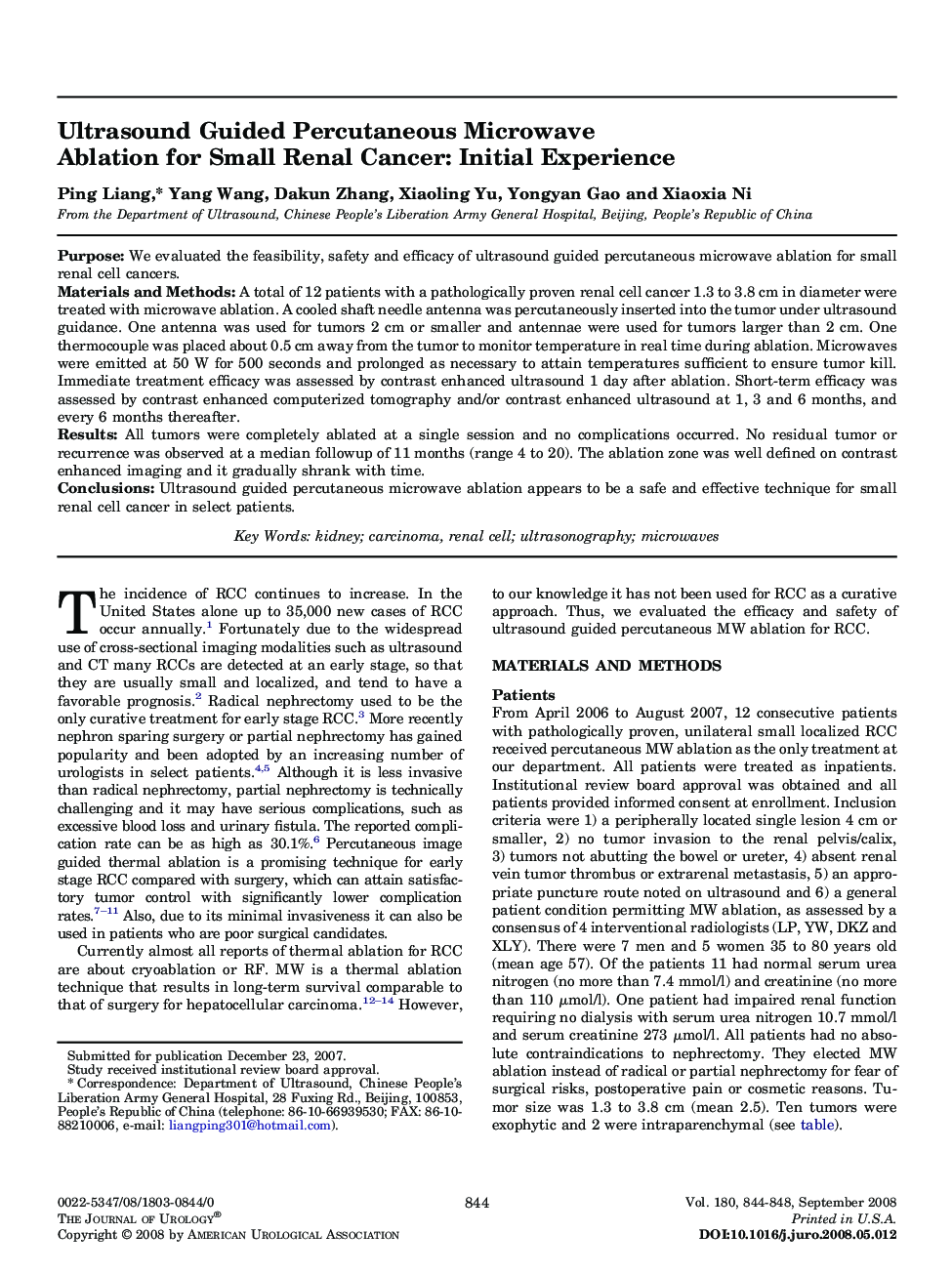| Article ID | Journal | Published Year | Pages | File Type |
|---|---|---|---|---|
| 3872789 | The Journal of Urology | 2008 | 5 Pages |
PurposeWe evaluated the feasibility, safety and efficacy of ultrasound guided percutaneous microwave ablation for small renal cell cancers.Materials and MethodsA total of 12 patients with a pathologically proven renal cell cancer 1.3 to 3.8 cm in diameter were treated with microwave ablation. A cooled shaft needle antenna was percutaneously inserted into the tumor under ultrasound guidance. One antenna was used for tumors 2 cm or smaller and antennae were used for tumors larger than 2 cm. One thermocouple was placed about 0.5 cm away from the tumor to monitor temperature in real time during ablation. Microwaves were emitted at 50 W for 500 seconds and prolonged as necessary to attain temperatures sufficient to ensure tumor kill. Immediate treatment efficacy was assessed by contrast enhanced ultrasound 1 day after ablation. Short-term efficacy was assessed by contrast enhanced computerized tomography and/or contrast enhanced ultrasound at 1, 3 and 6 months, and every 6 months thereafter.ResultsAll tumors were completely ablated at a single session and no complications occurred. No residual tumor or recurrence was observed at a median followup of 11 months (range 4 to 20). The ablation zone was well defined on contrast enhanced imaging and it gradually shrank with time.ConclusionsUltrasound guided percutaneous microwave ablation appears to be a safe and effective technique for small renal cell cancer in select patients.
